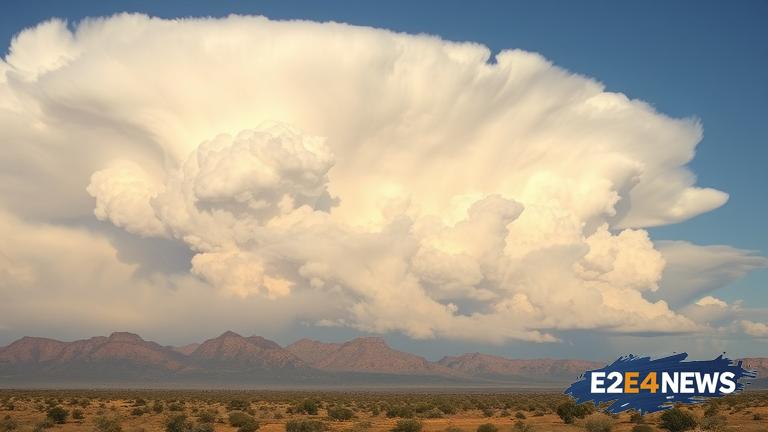Cloud seeding, a form of weather modification, has been employed in various regions, including Arizona and Texas, to augment precipitation and mitigate the effects of drought. This technique involves injecting substances such as silver iodide or dry ice into clouds to stimulate the formation of ice crystals, which in turn can lead to increased rainfall or snowfall. In Arizona, cloud seeding operations have been conducted for several decades, with the goal of enhancing precipitation in the state’s mountainous regions. The Arizona Department of Water Resources has been involved in cloud seeding efforts, working in conjunction with the National Center for Atmospheric Research. Similarly, in Texas, cloud seeding programs have been implemented to alleviate drought conditions and improve water supplies. The Texas Department of Licensing and Regulation has overseen cloud seeding operations in the state, which have been carried out by private companies. While the effectiveness of cloud seeding is still a topic of debate, proponents argue that it can be a useful tool in enhancing precipitation and reducing the impacts of drought. However, critics argue that the scientific evidence supporting cloud seeding is limited, and that more research is needed to fully understand its effects. Despite these concerns, cloud seeding operations continue to be employed in Arizona and Texas, as well as in other regions around the world. In recent years, advances in technology have improved the efficiency and effectiveness of cloud seeding operations, allowing for more targeted and precise seeding efforts. Additionally, the use of unmanned aerial vehicles (UAVs) and other innovative technologies has expanded the possibilities for cloud seeding, enabling operators to reach remote or inaccessible areas. Nevertheless, cloud seeding remains a complex and multifaceted issue, with many factors influencing its success or failure. As such, ongoing research and evaluation are necessary to determine the efficacy of cloud seeding and its potential applications in various contexts. Furthermore, it is essential to consider the potential environmental and social implications of cloud seeding, including its potential impacts on local ecosystems and communities. In conclusion, cloud seeding operations in Arizona and Texas represent an important aspect of weather modification efforts, with the potential to enhance precipitation and alleviate drought conditions. As research and technology continue to evolve, it is likely that cloud seeding will remain a vital tool in the pursuit of improved water resources and weather management.
